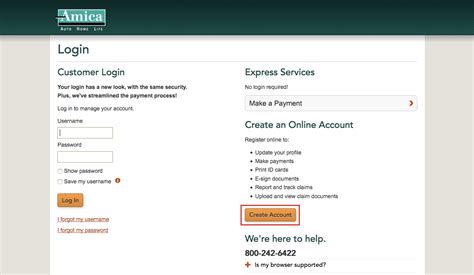Choosing Health Insurance

Navigating the Complexities: A Comprehensive Guide to Selecting the Right Health Insurance

Embarking on the journey to find the perfect health insurance plan can be a daunting task, especially with the myriad of options available in the market. Whether you're an individual seeking coverage for yourself or a business owner aiming to provide comprehensive benefits to your employees, understanding the nuances of health insurance is crucial. This guide aims to demystify the process, offering an in-depth analysis to help you make informed decisions.
In today's dynamic healthcare landscape, selecting the right health insurance is more than just a matter of finding affordable premiums. It involves a careful evaluation of various factors, from the breadth of coverage to the flexibility of plans. With the ever-changing nature of healthcare policies and regulations, staying informed is key to ensuring you get the best value for your money.
As we delve into this comprehensive guide, we'll explore the critical aspects of health insurance, offering practical insights and expert advice. From deciphering the complexities of insurance jargon to understanding the impact of different plans on your financial well-being, we aim to empower you with the knowledge needed to make confident choices. Whether you're a seasoned insurance shopper or a novice, this guide will provide the tools to navigate the intricate world of health insurance with ease and confidence.
Understanding the Fundamentals: Key Components of Health Insurance

At its core, health insurance is a financial protection mechanism designed to safeguard individuals and families from the often overwhelming costs of medical care. This vital safety net ensures that when unexpected health issues arise, you're not left bearing the full brunt of the financial burden. By understanding the fundamental components of health insurance, you can make more informed choices that align with your unique needs.
Coverage Types: Navigating the Different Options
Health insurance plans come in various forms, each offering a unique blend of benefits and coverage. The most common types include:
- Individual Health Insurance: Designed for individuals and families, these plans provide coverage for routine medical care, hospitalizations, and often include prescription drug benefits. Individual plans offer flexibility but may come with higher premiums, especially for those with pre-existing conditions.
- Group Health Insurance: Typically offered by employers, group health insurance plans provide coverage to a group of people, often at a discounted rate. These plans usually offer a wider range of benefits and may be more comprehensive than individual plans. Group insurance can be a great option for those seeking affordable coverage with extensive benefits.
- Medicare and Medicaid: Government-funded health insurance programs, Medicare and Medicaid provide coverage to specific groups, including seniors, people with disabilities, and low-income individuals. While these programs offer comprehensive coverage, they may have specific eligibility criteria and restrictions.
- Short-Term Health Insurance: As the name suggests, these plans provide temporary coverage for a set period, often with lower premiums. While they can be a good option for those between jobs or transitioning between plans, short-term insurance usually comes with limited benefits and may not cover pre-existing conditions.
Key Terms and Concepts to Understand
To navigate the world of health insurance effectively, it's essential to grasp some key terms and concepts. Here are a few critical ones to familiarize yourself with:
- Premium: The amount you pay for your health insurance coverage, typically on a monthly basis.
- Deductible: The amount you must pay out of pocket before your insurance coverage kicks in. Higher deductibles often mean lower premiums.
- Co-pay: A fixed amount you pay for covered medical services, often at the time of service. Co-pays can vary based on the type of service and the plan.
- Coinsurance: The percentage of costs you pay after you've met your deductible. For instance, if your plan has an 80/20 coinsurance, you pay 20% of the costs after the deductible, and the insurance covers the remaining 80%.
- Out-of-Pocket Maximum: The maximum amount you'll pay out of pocket in a year for covered services. This includes deductibles, co-pays, and coinsurance.
- Network: A group of healthcare providers, such as doctors and hospitals, that have a contract with your insurance company. Staying within your network usually results in lower costs.
- Pre-existing Conditions: Medical conditions that you had before enrolling in a health insurance plan. Under the Affordable Care Act (ACA), insurance companies cannot deny coverage or charge more for pre-existing conditions.
Evaluating Plans: A Comprehensive Analysis
When evaluating health insurance plans, it's essential to consider a range of factors to ensure you're choosing a plan that best suits your needs. This section will guide you through a comprehensive analysis, helping you make an informed decision.
Assessing Coverage and Benefits
The first step in evaluating a health insurance plan is understanding the coverage it provides. Here are some key aspects to consider:
- Scope of Coverage: Determine what services and treatments are covered by the plan. This includes routine care, hospitalizations, emergency services, prescription drugs, and specialized treatments.
- Pre-existing Condition Coverage: Ensure that the plan covers pre-existing conditions, as required by the ACA. This is particularly important if you or a family member has an ongoing medical condition.
- Specialized Care Coverage: If you require specialized medical care, such as dialysis or mental health services, ensure that the plan covers these treatments adequately.
- Prescription Drug Coverage: Evaluate the plan's prescription drug formulary to ensure that your medications are covered. Some plans may require prior authorization or have specific tiers for prescription drugs.
- Preventive Care: Look for plans that cover preventive services, such as vaccinations, cancer screenings, and annual physicals, without requiring a deductible or co-pay.
Comparing Costs and Financial Implications
Understanding the financial aspects of a health insurance plan is crucial. Here's what you need to consider:
- Premiums: Evaluate the monthly premium cost. While it's tempting to choose a plan with a lower premium, consider the overall cost, including deductibles and out-of-pocket expenses.
- Deductibles: Assess the deductible amount. Higher deductibles often mean lower premiums, but they can significantly impact your out-of-pocket costs if you require medical care.
- Coinsurance and Co-pays: Understand the coinsurance rates and co-pay amounts for various services. These can vary widely between plans and can impact your financial burden.
- Out-of-Pocket Maximum: Determine the plan's out-of-pocket maximum. This is the maximum amount you'll pay in a year for covered services, excluding premiums. A lower out-of-pocket maximum can provide financial security in case of significant medical expenses.
- Flexibility and Customization: Some plans offer the flexibility to customize your coverage, allowing you to add or remove certain benefits. This can be a cost-effective way to tailor your plan to your specific needs.
Network of Providers
The network of providers your plan offers can significantly impact your healthcare experience. Here's what to consider:
- In-Network Providers: Determine if your current healthcare providers are in the plan's network. Staying in-network can result in lower costs and more streamlined care.
- Out-of-Network Providers: Understand the plan's coverage for out-of-network providers. Some plans may allow you to see out-of-network providers but at a higher cost.
- Specialty Care Networks: If you require specialized care, ensure that the plan has a network of providers who offer these services.
- Network Size: Consider the size of the provider network. A larger network can offer more options, but it's also important to ensure that the providers are of high quality and conveniently located.
Making the Right Choice: Tailoring Your Health Insurance Plan
Now that you have a comprehensive understanding of health insurance and have evaluated various plans, it's time to make an informed decision. Here are some final considerations to help you choose the right plan for your needs.
Personal Health and Financial Considerations
Consider your personal health and financial situation when choosing a plan. If you have ongoing medical conditions or anticipate significant medical expenses, a plan with lower out-of-pocket costs might be preferable. Conversely, if you're generally healthy and don't anticipate many medical expenses, a plan with a higher deductible and lower premiums could be a cost-effective choice.
Understanding Plan Limitations and Exclusions
All health insurance plans have certain limitations and exclusions. These can include specific treatments, services, or conditions that are not covered by the plan. It's crucial to understand these limitations to ensure that you're not surprised by unexpected costs. Carefully review the plan's benefits summary or policy document to identify any exclusions.
Seeking Professional Guidance
If you're still unsure about which plan to choose, consider seeking guidance from a professional. Insurance brokers or financial advisors can provide valuable insights and help you navigate the complexities of health insurance. They can also assist in comparing different plans and understanding the fine print, ensuring you make a decision that aligns with your best interests.
Conclusion: Empowering Your Health Journey

Choosing the right health insurance plan is a critical decision that can significantly impact your well-being and financial stability. By understanding the key components of health insurance, evaluating plans comprehensively, and considering your personal needs, you can make an informed choice. Remember, health insurance is not just about premiums and deductibles; it's about ensuring you have the coverage you need when you need it most.
With this comprehensive guide, you're now equipped with the knowledge to navigate the complex world of health insurance. Whether you're selecting coverage for yourself, your family, or your employees, you can approach the process with confidence, knowing that you're making the best decision for your unique circumstances. Your health and financial security are worth the effort, and with the right health insurance plan, you can embark on your health journey with peace of mind.
Frequently Asked Questions
How do I choose the right health insurance plan for my family?
+
When selecting a health insurance plan for your family, consider your collective health needs. Assess if any family members have ongoing medical conditions or require specialized care. Choose a plan that provides comprehensive coverage for these needs, while also considering the financial implications. Opt for a plan with a balance of affordable premiums and manageable out-of-pocket expenses to ensure your family’s health and financial well-being.
What should I look for in a health insurance plan if I have a chronic condition?
+
If you have a chronic condition, look for a health insurance plan that provides extensive coverage for your specific needs. Ensure the plan covers the treatments, medications, and specialists required for your condition. Additionally, consider plans with lower out-of-pocket maximums and flexible coverage options to manage your condition effectively without incurring excessive costs.
Are there any tax benefits associated with health insurance plans?
+
Yes, there are tax benefits associated with certain health insurance plans. For instance, employer-sponsored health plans often offer tax advantages, as the premiums are typically paid with pre-tax dollars. Additionally, under certain circumstances, you may be eligible for tax credits or subsidies to help offset the cost of your health insurance premiums. Consult a tax professional to understand the specific tax benefits available to you.
What happens if I need to change my health insurance plan mid-year?
+
Changing your health insurance plan mid-year is possible but may come with certain limitations. Generally, you can make changes during the annual open enrollment period or if you experience a qualifying life event, such as marriage, birth of a child, or loss of other coverage. Check with your insurance provider or an insurance broker to understand the specific rules and options available to you.
How can I ensure my health insurance plan covers my preferred healthcare providers?
+
To ensure your health insurance plan covers your preferred healthcare providers, carefully review the plan’s provider network. Choose a plan that includes your current doctors and specialists in its network. If you have specific healthcare providers you wish to continue seeing, reach out to their offices to verify their network participation. Alternatively, consider a plan with an open network or the option to customize your network.



